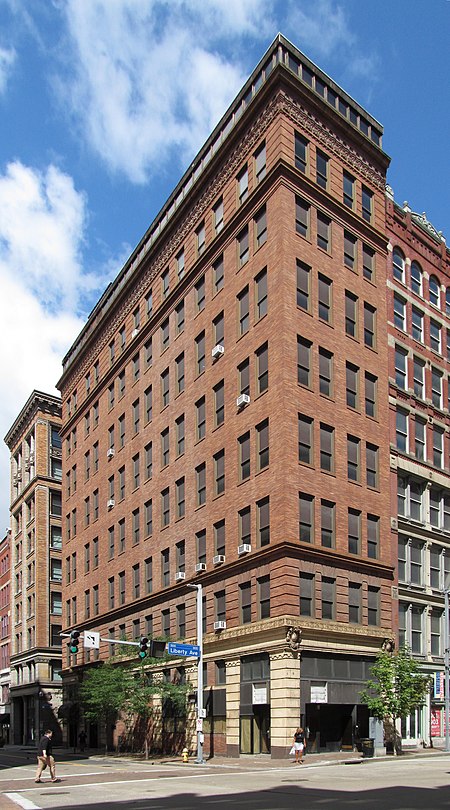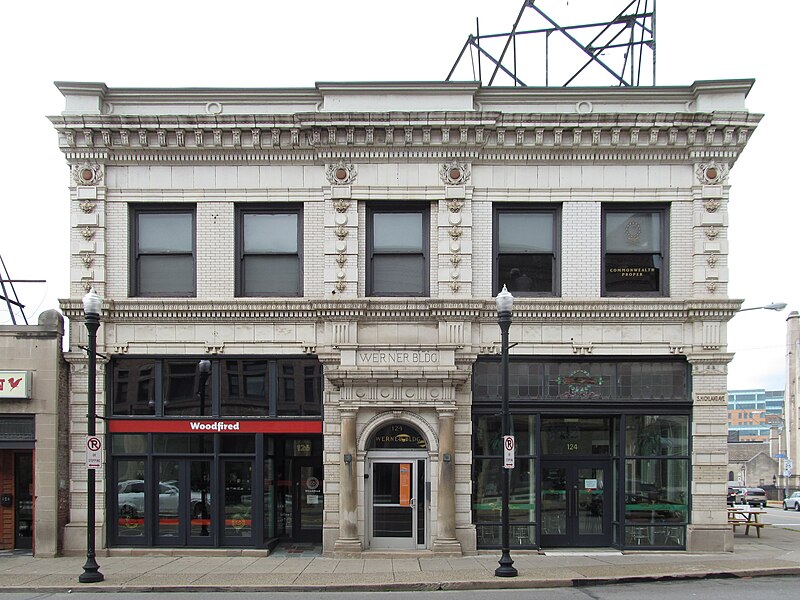

This beautiful building has a long and varied history. It seems to have been built a little before 1910 by a dry-cleaning company.1 After a while the East Liberty Chamber of Commerce moved in to preside over the slow decline of East Liberty. In 2001, when the East Liberty revival was barely beginning, the Werner Building became a performance-art space. Now, with East Liberty booming, it’s a profitable property.

The metalwork on top supported a billboard where artists spelled out messages, but in 2018 one artist posted a message so offensive that the building’s owner had it removed and shut down the billboard scheme. What was this offensive message? “THERE ARE BLACK PEOPLE IN THE FUTURE.” That was all. Father Pitt can only say that, if you are offended by the idea that there are Black people in the future, then you can go off and get yourself your own future, because old Pa Pitt does not want to be part of it.


The whole building is lavishly festooned with terra cotta and stained glass.
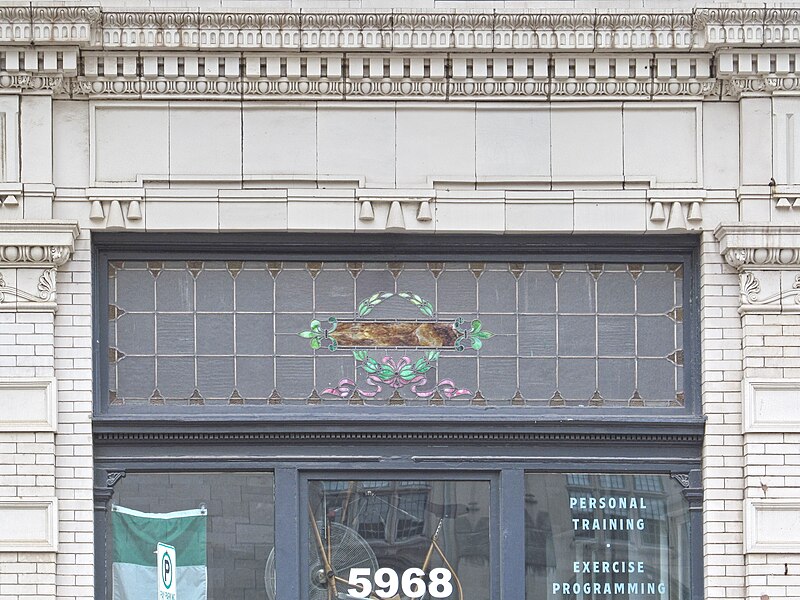

- Addendum: The architect was Frederick Sauer, and the building was probably finished in 1908. “Among the Architects,” Pittsburgh Gazette-Times, June 11, 1907: “The same architect [Sauer] is taking bids for a four-story store and office building to be erected for Oswald Werner on 58×140 feet at Baum street and Highland avenue, East End. The building, which will be constructed of white enameled terra cotta, will cost about $60.000. It is expected to have it completed by April 1, 1908.” The building as it stands is two floors, although it looks as though it might have been designed for additional floors later. The white enameled terra cotta, however, is distinctive. And there’s no doubt about the owner, who is immortalized in terra cotta. Sauer had also designed a house for Oswald Werner in 1891, which still stands in Highland Park today. ↩︎





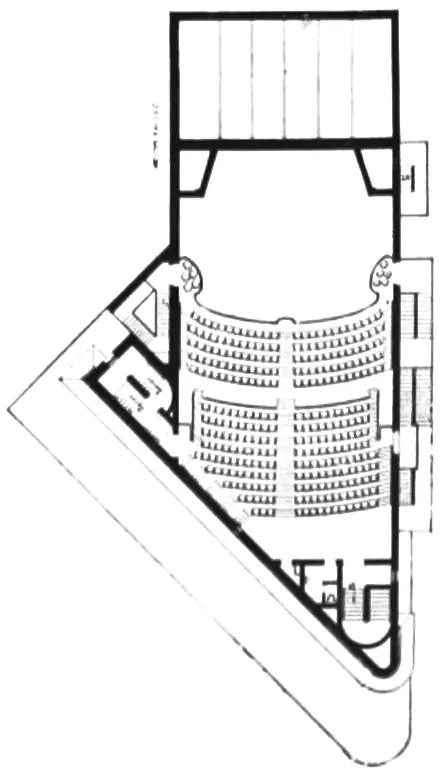














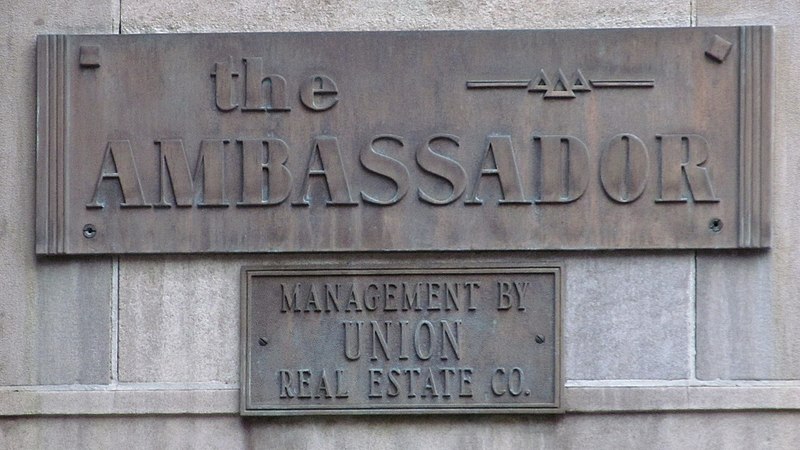


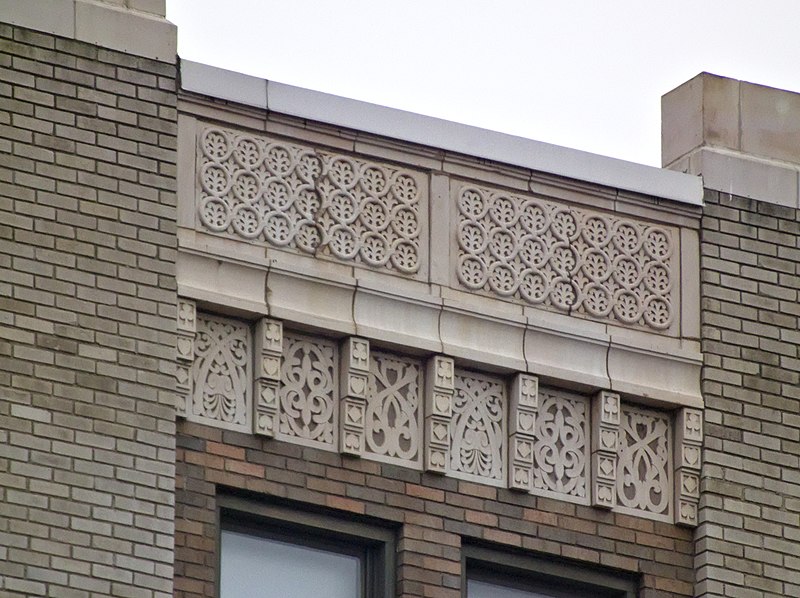
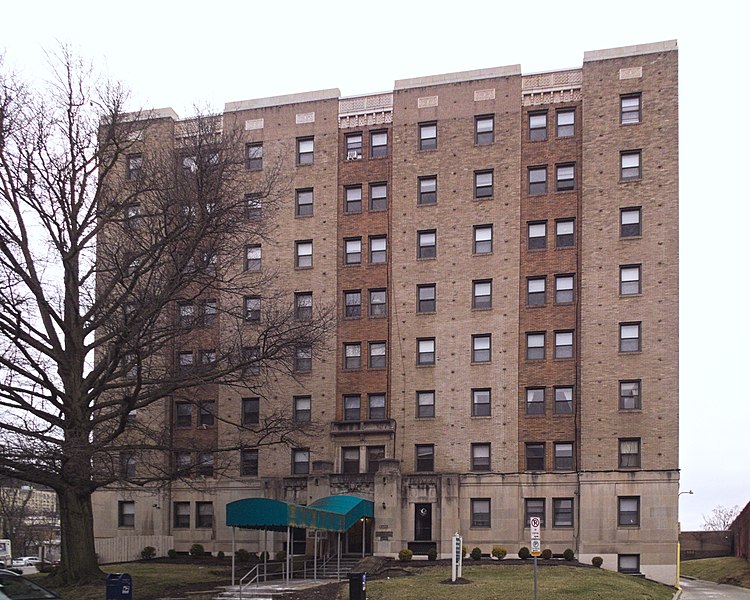









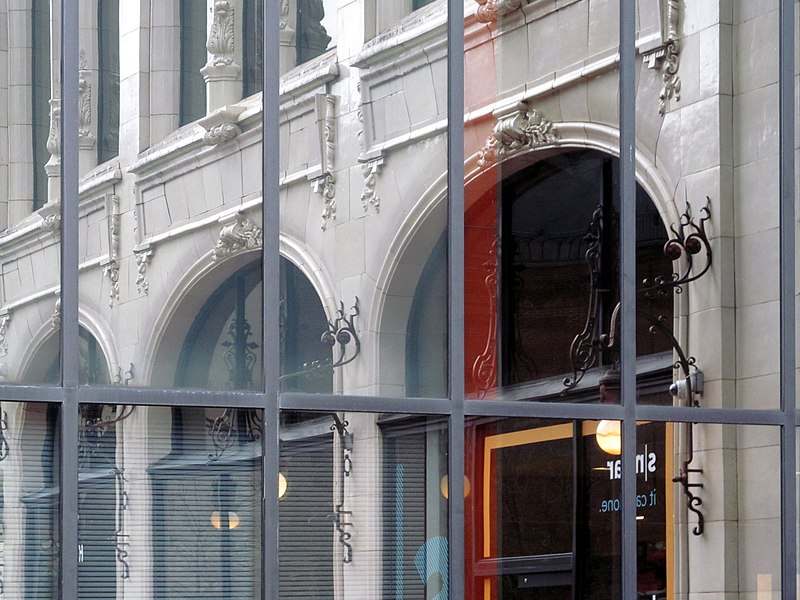
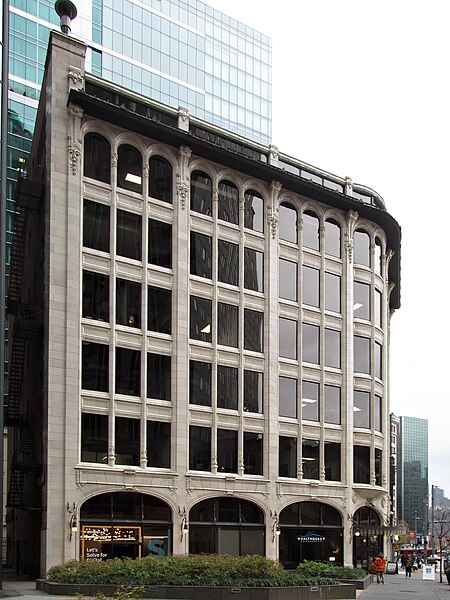





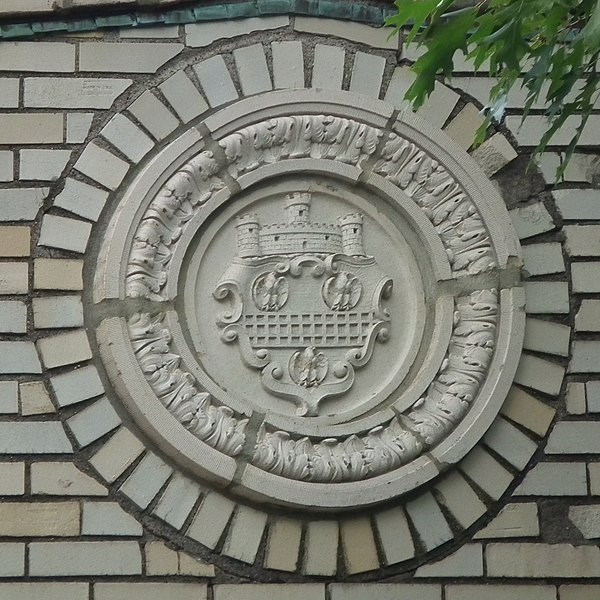

![Service entrance]](https://upload.wikimedia.org/wikipedia/commons/thumb/9/9c/Sampson_Motor_Co.%2C_Oakland%2C_2022-08-19%2C_service_entrance_01.jpg/448px-Sampson_Motor_Co.%2C_Oakland%2C_2022-08-19%2C_service_entrance_01.jpg)


